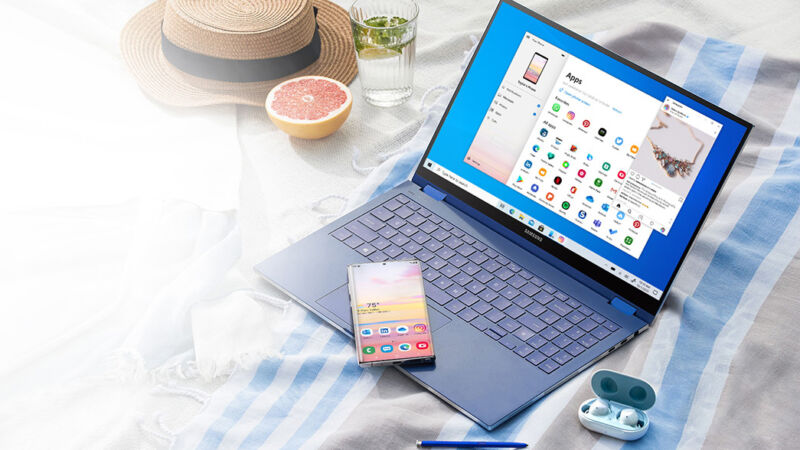From the ashes of Astoria —
Microsoft already has the Windows Subsystem for Linux, so why not Android, too?
Ron Amadeo
–

Enlarge / Microsoft’s “Your Phone” app can display Android apps via remote desktop, but soon we might have native Android apps.
If the release of the Surface Duo wasn’t enough of a sign that Microsoft is cozying up to Android more, how about this? A report from Windows Central claims that Microsoft is working on building Android app support into Windows 10.
The effort is codenamed “Project Latte,” and according to the report, it would “allow app developers to bring their Android apps to Windows 10 with little to no code changes.” The Android-on-Windows apps would be packaged as an MSIX file and would be distributed through the Windows Store.
A lot of the hard work for this is already done, thanks to the Windows Subsystem for Linux (WSL) that already ships in Windows 10. WSL is a virtualized Linux kernel in Windows, making it easy to run developer-centric Linux tools through the Windows command line. Microsoft is also testing support for Linux GUI apps in WSL, and GPU acceleration. Android, which runs the Linux kernel, is expected to plug into the WSL for app support, so Microsoft mainly needs to implement a version of the Android Runtime (ART), which already runs on Linux, is open source, and has x86 compatibility. Unofficially, it is already possible to run Android apps on WSL with Anbox, a project meant to run Android apps on full GNU/Linux.
Microsoft wouldn’t be the first to build Android app support into some other OS. Google does it in house with Chrome OS, allowing the company’s Web-focused laptops to run all your favorite phone apps. For also-ran OS developers, Android apps are often seen as a solution to fixing the app gap. Blackberry tried to stay afloat in the OS wars by building Android support into Blackberry 10, but it eventually gave up and just started producing real Android devices before quitting the market. Samsung’s “Android-killer” Tizen OS has an “application compatibility layer” that runs Android apps on the Linux-based OS. Jolla’s Sailfish OS, an OS billed as the spiritual successor to Nokia’s MeeGo OS, also supports Android apps.
Microsoft also thought this was a great idea in 2015, when the now-canceled “Project Astoria” was supposed to bring Android support to Windows 10 Mobile. The next company to take a swing at this ball will be Huawei, which, after the US’ export ban, wants to develop its own “Harmony OS” for smartphones with Android app support (after running them through a special compiler).
The disadvantages of non-Google Android are well-known at this point. Android-on-Windows won’t have access to the Play Store or Google Play Services, which many apps depend on for things like Google-issued sign-on, push notifications, maps APIs, and a million other things. Windows would basically count as an Android fork. For apps written for the non-Google ecosystem, though, you’d be able to easily run your favorite apps, assuming a browser version of them is not more preferable.
The report says Microsoft is “hoping to announce Project Latte next year and could ship as part of the fall 2021 release of Windows 10.”

